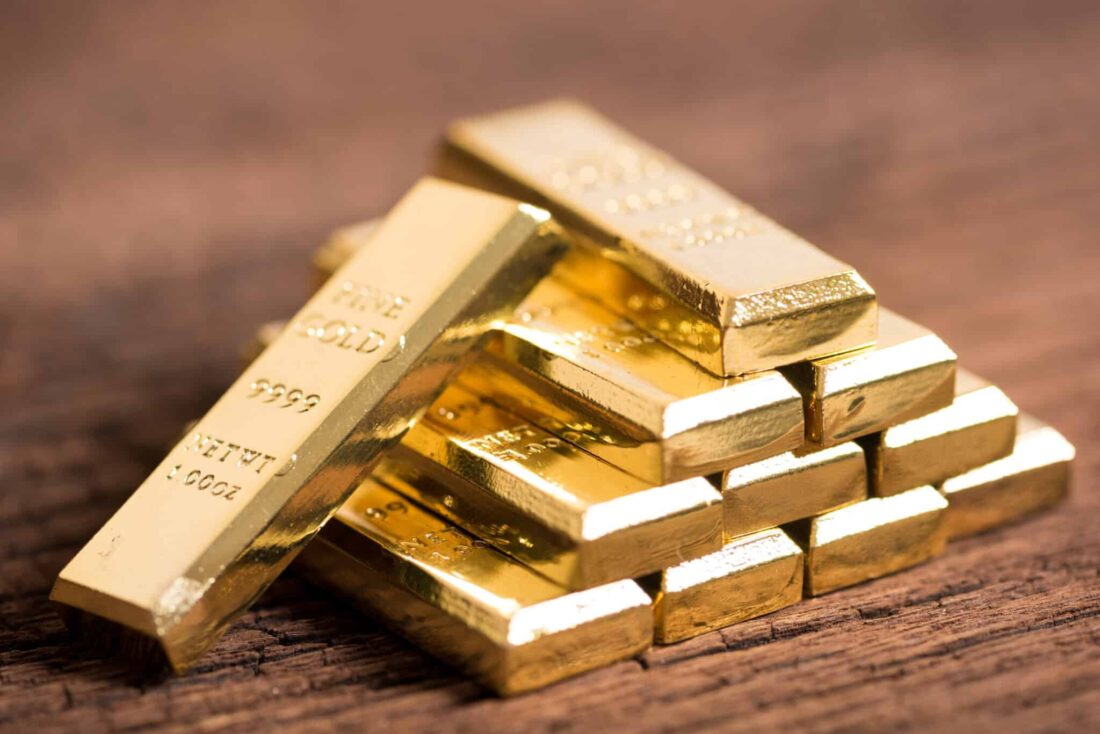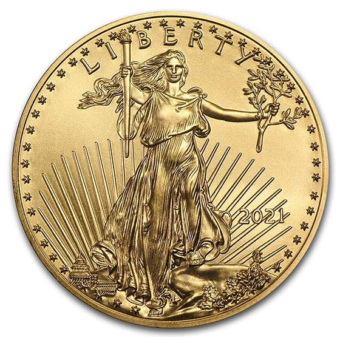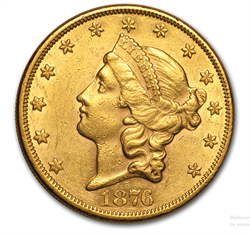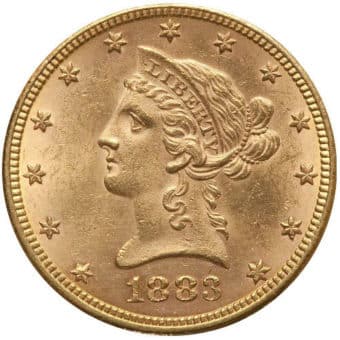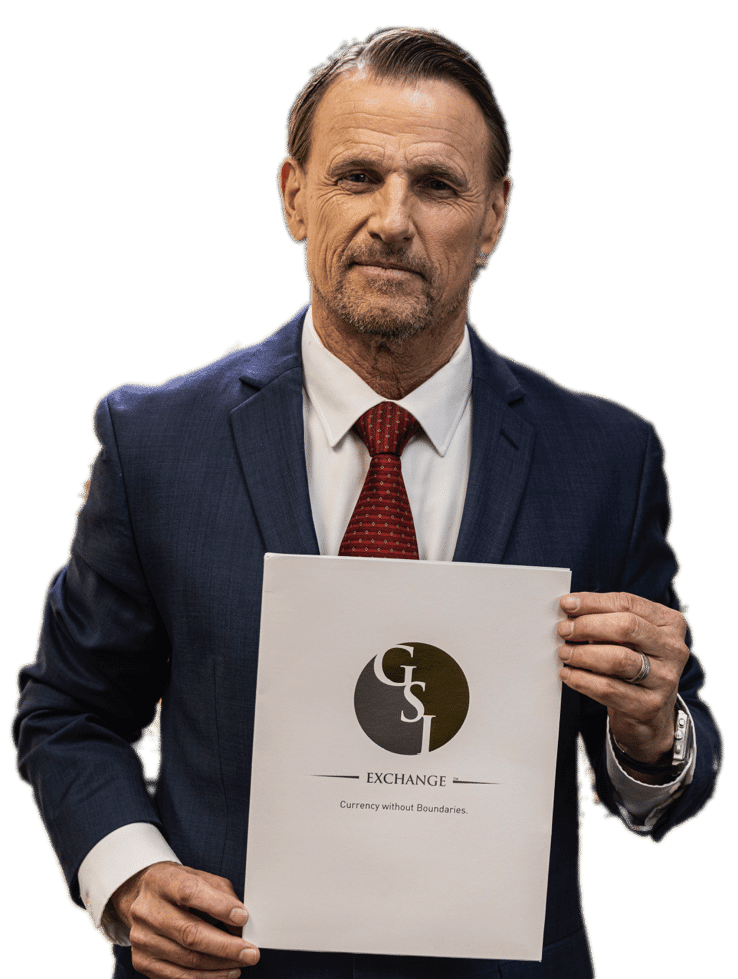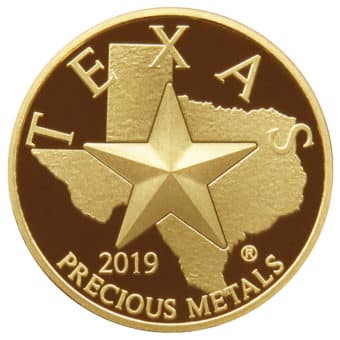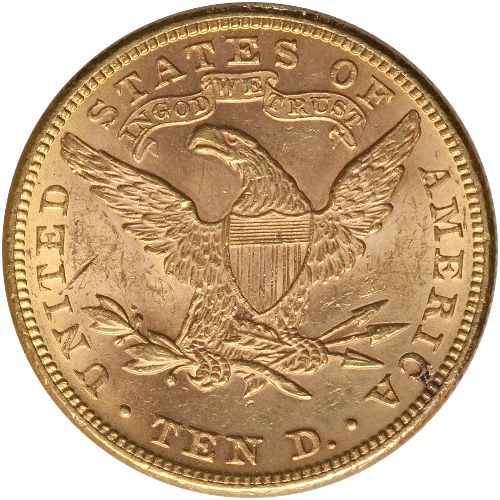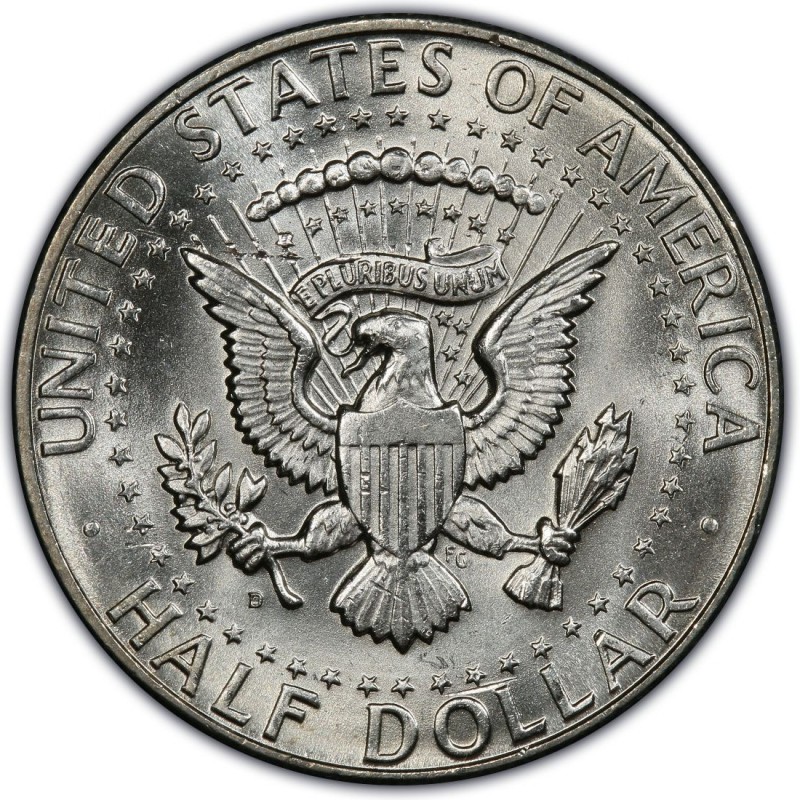Welcome to this week’s newsletter—your essential guide to last week's key events and a glimpse into what the next week holds for the gold and silver markets. From the impact of the U.S. housing sector's growth on gold prices to Ray Dalio's warning about the U.S. debt crisis, there are plenty of key events this week that we have to cover. Looking ahead, we preview significant economic indicators like the U.S. Leading Economic Indicators, Existing Home Sales, and the upcoming FOMC meeting minutes, all of which could sway the precious metals market. Whether you're an enthusiast, analyst, or simply a curious observer, this newsletter is your key to understanding the dynamic world of gold and silver. Stay ahead of the curve, and don't miss out!
The Gold Trail: A Daily Journey Through the Week's Market
Monday - 11.13.23: Moody's has downgraded the outlook on the U.S. credit rating to "negative" from "stable" due to concerns over rising debt and political polarization. This move comes as the U.S. is facing a potential government shutdown and as President Biden's approval ratings have fallen sharply. The downgrade could have implications for the U.S. economy and could put pressure on Congress to take action to address the country's fiscal challenges.
Tuesday - 11.14.23: Gold prices rose by 0.6% to $1,946.21 per ounce, while silver prices climbed by 2.96% to $22.66 per ounce. Gains in both precious metals were attributed to a weakening US dollar and a flight to safe-haven assets amid concerns over a potential recession. Additionally, the ongoing geopolitical tensions in the Middle East provided further support to gold and silver prices.
Wednesday - 11.15.23: The rally in precious metals was fueled by a weaker US dollar and a continued appetite for safe-haven assets in the face of global economic uncertainty. The ongoing conflict between Israel and Palestine in the Middle East also contributed to the upward momentum in gold and silver prices.
Thursday - 11.16.23: Gold and silver prices continued their upward trend on Thursday, November 16, 2023, with gold rising by 0.52% to $1,986.01 per ounce and silver gaining 1.70% to $23.83 per ounce. The persistent weakness of the US dollar and ongoing concerns over a potential recession were the primary drivers of the rally in precious metals.
Friday- 11.17.23: Gold and silver prices have surged this week, spurred by a weakening U.S. dollar and declining Treasury yields. These favorable market conditions have attracted buyers, pushing December gold futures to $1,993.40 and December silver futures to $24.14. Tamer-than-expected inflation data from the U.S. and U.K. has fueled expectations of a Fed rate cut in the spring, boosting demand for precious metals.
Gold Prices Remain Unmoved Amid U.S. Housing Sector Growth in October
Gold prices demonstrated stability, showing minimal response to the U.S. housing construction data for October, which surpassed expectations. The report revealed a 1.9% increase in housing starts, reaching a seasonally adjusted annual rate of 1.372 million units, contrary to the anticipated decline. Despite this growth, the housing construction sector experienced a 4.2% year-on-year decline. Additionally, building permits, a future homebuilding indicator, rose by 1.1% to 1.487 million, again defying expectations of a decrease. In contrast, the yearly issuance of building permits fell by 4.4%. Amid these developments, the gold market initially faced some selling pressure but quickly recovered, with spot gold trading slightly higher at $1,986.03 an ounce. The report highlights the significant impact of the U.S. housing sector on the national economy, which continues to struggle due to high prices and increased mortgage rates, exacerbated by the Federal Reserve's tight monetary policies.
Dalio Warns of Impending Crisis as U.S. Debt Nears Critical Inflection Point
Ray Dalio, founder of Bridgewater Associates, voiced significant concerns over the escalating U.S. government debt, which he believes is nearing a critical inflection point that could exacerbate existing political and social tensions. Speaking on CNBC's "Squawk Box," Dalio emphasized the importance of financial strength, characterized by a country earning more than it spends and maintaining a healthy balance sheet. The U.S. debt has surged to $33.7 trillion, a 45% increase since the onset of the Covid pandemic, with $26.7 trillion owed publicly. The fiscal 2023 saw the government incurring $659 billion in net interest costs to finance this debt, a situation Dalio describes as a recipe for trouble. He highlighted the acceleration of the need to borrow to cover deficits, leading to a supply-demand issue, especially as foreign investors, who traditionally account for 40% of U.S. Treasury demands, have begun reducing their holdings. Notably, China has decreased its holdings by 17% over the past year. Dalio's warnings suggest a looming financial crisis fueled by increasing debt, rising interest rates, and declining foreign investment in U.S. government debt.
Are We To Expect Deflation This Holiday Season?
Walmart CEO Doug McMillon has indicated the potential for deflation in the coming months, particularly in general merchandise and key grocery items like eggs, chicken, and seafood. This trend, which Walmart welcomes as beneficial for customers, aligns with the latest consumer price index report showing flat month-over-month inflation and a two-year low in core CPI. While the overall cost of living, including food, electricity, and personal care, remains higher than in previous years, there are signs of easing. For instance, this year's Thanksgiving dinner is expected to be cheaper than last year. However, Walmart's CFO John David Rainey notes that customers are still cautious, often waiting for sales before purchasing. While some food prices at Walmart continue to be high, the retailer, and by extension consumers, are starting to see pockets of disinflation, offering a glimmer of hope in an otherwise challenging economic landscape marked by persistent inflation.
Silver's Industrial Demand Hits Record High, Counterbalancing Weak Investment Interest
The silver market is anticipated to experience its third consecutive annual deficit, primarily driven by a record surge in industrial demand, as reported by Metals Focus on behalf of the Silver Institute. This demand, fueled by sectors like photovoltaics, power grids, 5G networks, consumer electronics, and vehicle production, is expected to grow by 8% to a historical high of 632 million ounces. Despite this industrial boom, total global physical demand for silver is projected to slightly decrease to 1.14 billion ounces, down by 10% from 2022. The investment sector, particularly in India and Germany, shows a significant decline, with physical demand expected to drop 21% to 263 million ounces, a three-year low. Additionally, silver-backed ETFs are facing a second year of net outflows. Nonetheless, Metals Focus foresees a substantial, albeit reduced, deficit in the silver market for the year and anticipates persistent deficits in the future. This ongoing shortfall is expected to support a long-term uptrend in silver prices, with a 6% increase to an average of $23.10 an ounce projected for the year. This forecast aligns with other analysts' views that silver, currently undervalued compared to gold, is well-positioned for growth as the Federal Reserve potentially eases interest rates in the coming year.
Gold Prices Surge Amid Dollar Weakness and Global Conflicts
The latest Consumer Price Index (CPI) report, showing unchanged inflation compared to the previous month, has led to a significant drop in the US dollar, subsequently boosting gold prices. The CPI increased 3.2% year-over-year, falling below Wall Street projections. Notably, the core CPI, which excludes food and energy, rose only 0.2% - the smallest increase since September 2021, primarily due to a 2.5% decrease in energy prices, although food costs rose by 0.3%. This inflation data has drastically raised the likelihood of the Federal Reserve pausing rate hikes in December to 99.8%, according to the CME’s FedWatch tool. The weakened dollar, dropping 1.51% to an index of 103.90, primarily fueled the surge in gold prices, with the December futures contract gaining 0.85%. This increase in gold was predominantly due to the dollar's weakness, overcoming moderate selling pressure on the precious metal. Spot gold prices also reflect this trend, with physical gold fixed at $1962.20, considering both the effect of the weakened dollar and selling pressure. Surprisingly, gold sales persist despite escalating geopolitical tensions, including the ongoing conflicts in Ukraine and the Middle East, and new confrontations involving the United States in Iraq and Syria. If the dollar continues to weaken and traders shift from selling to buying gold, a significant rally in gold prices may ensue.
Investor Optimism on Rate Cuts Could Clash with Fed's Cautious Stance
Investors anticipating aggressive interest rate cuts by the Federal Reserve in the near future might face disappointment, despite recent positive economic indicators. The CME Group’s FedWatch tool suggests a full percentage point cut by the end of 2024, buoyed by reports of stable consumer prices and a decline in wholesale prices in October. However, Federal Reserve officials, including former Boston Fed President Eric Rosengren, maintain a cautious approach, emphasizing the need for more convincing data before considering rate reductions. While the Fed aims for a 2% annual inflation goal, current measures like the 12-month core CPI and the Atlanta Fed’s "sticky" price index still show higher rates. Market optimism, driven by the belief that the Fed could achieve a "soft landing" for the economy, contrasts with the historical context where aggressive easing usually aligns with economic downturns. Additionally, the stock market rally and drop in Treasury yields, indicating eased financial conditions, might complicate the Fed's strategy of keeping rates higher for longer. This situation presents a complex scenario for the Fed, balancing optimism with the reality of numerous external factors affecting the global economy.
Signs of Easing Inflation: October Sees Largest Drop in Wholesale Prices Since 2020
In October 2023, wholesale prices recorded their most significant monthly decline since April 2020, dropping by 0.5% against Wall Street's expectation of a 0.1% increase, signaling a potential easing of the recent inflation surge. This decline in the producer price index (PPI) was complemented by the Labor Department's report that the consumer price index (CPI) remained unchanged from the previous month, spurring optimism on Wall Street about a potential halt in Federal Reserve rate hikes. Notably, the drop in wholesale prices was primarily driven by a 15.3% decrease in gasoline prices. Despite these positive indicators, consumer spending showed sensitivity to price changes, with a minor 0.1% decline in retail sales. However, excluding autos, sales rose slightly. The report also noted a decline in goods prices, while final demand services prices remained steady. Other economic data, such as the Empire State Manufacturing Survey, reflected unexpected growth in the New York area, further suggesting a complex and evolving economic landscape.
Gold as a Safe Haven Amidst U.S. Debt Concerns and Dollar Instability, Advises Maison Placements
John Ing, President and CEO of Maison Placements Canada, advises investors to consider gold as a valuable asset in response to escalating global economic threats and U.S. debt concerns. In his latest research, Ing predicts a rise in gold prices to $2,200 per ounce, attributing this to factors like mounting inflation, geopolitical risks, global debt, and the rise of populism. He particularly highlights the U.S. government's soaring debt, which has reached over $33 trillion, and the ongoing fiscal challenges, including deficit spending and the transition to green energy, which he describes as a 'black hole.' Ing also points out the decreasing global reliance on the U.S. dollar and the challenges faced by the U.S. in maintaining its military and economic dominance. The continued selloff in bond markets, indicating investor reluctance towards U.S. debt, and the potential for higher yields and economic pain, further underscore the appeal of gold. In this uncertain economic landscape, Ing sees gold as an opportunity for investors to preserve their capital.
MF Advocates for CBDCs as Potential Cash Replacements Amidst Rising Global Interest
Kristalina Georgieva, the managing director of the International Monetary Fund (IMF), emphasized the growing potential of Central Bank Digital Currencies (CBDCs) to replace cash, particularly highlighting their benefits in terms of distribution efficiency in island economies, resilience in advanced economies, and financial inclusion in regions with low bank account penetration. As of June 2023, only 11 countries have adopted CBDCs, but more than 100 countries are exploring them, reflecting a significant global interest. CBDCs, which are digital forms of fiat currencies powered by blockchain technology, offer a safe and low-cost alternative to cash and could serve as a bridge between private monies. Georgieva's remarks at the Singapore FinTech Festival align with the IMF's stance that the public sector should continue preparing to deploy CBDCs and related payment platforms in the future, especially for cross-border payments. The IMF's encouragement comes amidst a backdrop of increased interest in digital currencies and the potential of artificial intelligence to amplify CBDC benefits, like providing accurate credit scoring and personalized financial support, while ensuring data security and privacy.
The Slow Pace of CBDC Implementation May Be Our Saving Grace
The United States government's cautious approach to implementing Central Bank Digital Currencies (CBDCs) could prove to be a blessing in disguise. While its bureaucratic procedures may seem frustrating at times, they may also be providing us with a temporary reprieve from the potential dangers of a digital currency system. The Federal Reserve's reluctance to move forward, entangled in regulatory hurdles and requiring Congressional approval, may be inadvertently shielding us from a future where financial surveillance is pervasive and privacy is a mere concept. However, this protective grace period is not indefinite. CBDC implementation is not a question of if, but when. For now, the government's slow progress is the only obstacle between us and a potential dystopian financial landscape.
Jim Rogers: Gold and Silver Shine Brighter Amid Inflation and Recession Fears
Veteran investor Jim Rogers predicts a resurgence of gold and silver as inflation worsens and a recession looms. He believes that these commodities offer better protection than stocks, bonds, or real estate in the face of rising prices and economic uncertainty. Rogers attributes the potential decline of the US dollar as the world's reserve currency to Washington's use of sanctions, which has raised concerns about the dollar's neutrality. He also warns that the world has not yet seen the worst of inflation and that governments will continue to print money, further exacerbating the issue. While he doesn't expect an immediate recession, Rogers believes that a major downturn is likely given the current economic climate.
Gold Prices Predicted to Soar 50% in 2024, Reaching $3,000
Gold prices are expected to surge by 50% in 2024, reaching a record high of $3,000 per ounce, driven by macroeconomic factors and geopolitical tensions. This significant rise is forecast by Bloomberg commodity strategist Mike McGlone, who cites the ongoing Middle East conflict and the potential for a US recession as contributing factors. Gold's status as a safe haven asset and hedge against inflation is expected to fuel its appreciation in the coming year.
Next Week’s Key Events
Monday, November 20
- 10:00 am: U.S. Leading Economic Indicators (October)
Tuesday, November 21
- 10:00 am: Existing Home Sales (October)
- 2:00 pm: Minutes of Fed's Oct. 31-Nov. 1 FOMC meeting
Wednesday, November 22
- 8:30 am: Initial Jobless Claims (for the week ending November 18)
- 8:30 am: Durable-Goods Orders (October)
- 10:00 am: Consumer Sentiment (final for November)
Thursday, November 23
- Thanksgiving holiday, no reports scheduled
Friday, November 24
9:45 am: S&P flash U.S. Services PMI (November).
9:45 am: S&P flash U.S. Manufacturing PMI (November)
HOW THESE REPORTS MIGHT IMPACT THE GOLD AND SILVER MARKETS:
U.S. Leading Economic Indicators: This report can influence precious metal markets as it gives insights into economic trends. Positive data may strengthen the dollar, potentially lowering gold and silver prices, as they become more expensive in other currencies.
Existing Home Sales: This data reflects economic strength. Higher home sales can signal economic optimism, potentially boosting the dollar and pressuring gold and silver prices down.
Minutes of the Federal Reserve's FOMC Meeting: These minutes are crucial for insights into the Fed's monetary policy. Hawkish tones can strengthen the dollar and weaken gold and silver, while dovish tones can have the opposite effect.
Initial Jobless Claims: Lower jobless claims indicate a stronger labor market, which can strengthen the dollar and negatively impact gold and silver prices. Conversely, higher claims can lead to a weaker dollar and stronger precious metal prices.
Durable-Goods Orders: This report is a key indicator of manufacturing health. Strong numbers can boost the dollar, negatively impacting gold and silver. Weak numbers can lead to a weaker dollar and potentially higher precious metal prices.
Consumer Sentiment: High consumer confidence can strengthen the dollar as it suggests a robust economy, potentially leading to lower gold and silver prices. Lower confidence can weaken the dollar and support precious metal prices.
S&P flash U.S. Services and Manufacturing PMI: These indicators provide insights into the economic activity in services and manufacturing sectors. Strong PMI data can strengthen the dollar and pressure gold and silver prices, while weak data can have the opposite effect.


